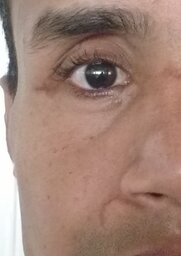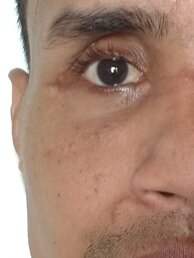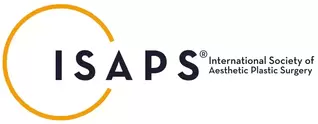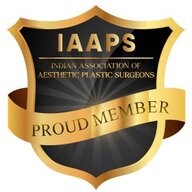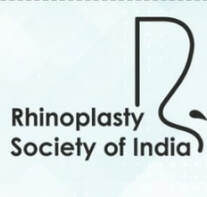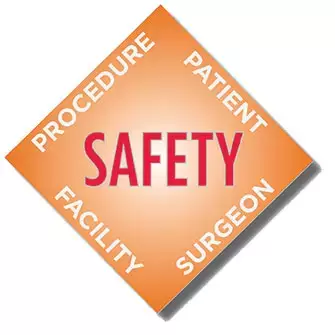Fat Grafting
Fat grafting is a technique during which we transfer viable fat cells containing tissue from one part of the body to another. Fat grafting finds application in both cosmetic and reconstructive surgery.
Fat cells are usually harvested from the abdomen, flanks, hips, and thighs. These are obtained using a small cannula. A cannula is a small tube that is inserted into the body using small incisions. The technique of harvesting fat is similar to liposuction. Depending on the amount of fat to be transferred the procedure can be done under local or general anesthesia.
Once the fat is harvested, it is processed to remove the fractions that are not useful. Useful fraction would include the viable fat cells with its supporting framework of connective tissue cells. This useful fraction is then injected into recipient areas. The recipient areas can be face, hands, breasts or back. The injection is carried out with the help of specially designed blunt cannulas. After fat grafting, the recovery is rapid even though there can be swelling of the treated parts. The swelling gradually reduces with time. Fat grafting is done either as an outpatient or short stay procedure. It does not need a prolonged stay inside the hospital.
Once the fat cells are deposited within the tissues, it derives its nutrition from the surrounding areas. This is similar to grafting performed with other tissues like skin, bone or cartilage. Once the graft obtains its blood supply from the new areas, it survives for a long time. Smaller parcels of tissues have a better chance of survival and take when compared to larger bits of tissue. With refinements in the technique, there is an improvement in the percentage of the fat cells that are taken up after one session of fat grafting.
What are the benefits of fat grafting?
The benefits include,
Due to the favorable effects of fat grafting on growth, it is used for healing of problem wounds, problem scars. Fat grafting leads to accelerated healing and improvement in the scar texture and pliability.
What is emulsified fat grafting?
Emulsified fat grafting is done for improvement of the skin or scars. During this procedure, the fat cells are mechanically disrupted after harvest, filtered and the filtered fraction is injected with the help of fine needles. The injected fraction does not contain viable fat cells. Instead, it is comprised of cells with rejuvenating and growth-promoting properties. The fat cells are selectively removed during the mechanical disruption and subsequent filtration.
Emulsified fat grafting is used in the treatment of atrophic scars and pigmentation abnormalities of the skin. Relatively recent scars tend to respond better than old scars.
Who is a good candidate for fat grafting?
A good candidate would be,
Fat cells are usually harvested from the abdomen, flanks, hips, and thighs. These are obtained using a small cannula. A cannula is a small tube that is inserted into the body using small incisions. The technique of harvesting fat is similar to liposuction. Depending on the amount of fat to be transferred the procedure can be done under local or general anesthesia.
Once the fat is harvested, it is processed to remove the fractions that are not useful. Useful fraction would include the viable fat cells with its supporting framework of connective tissue cells. This useful fraction is then injected into recipient areas. The recipient areas can be face, hands, breasts or back. The injection is carried out with the help of specially designed blunt cannulas. After fat grafting, the recovery is rapid even though there can be swelling of the treated parts. The swelling gradually reduces with time. Fat grafting is done either as an outpatient or short stay procedure. It does not need a prolonged stay inside the hospital.
Once the fat cells are deposited within the tissues, it derives its nutrition from the surrounding areas. This is similar to grafting performed with other tissues like skin, bone or cartilage. Once the graft obtains its blood supply from the new areas, it survives for a long time. Smaller parcels of tissues have a better chance of survival and take when compared to larger bits of tissue. With refinements in the technique, there is an improvement in the percentage of the fat cells that are taken up after one session of fat grafting.
What are the benefits of fat grafting?
The benefits include,
- Volume enhancement: Fat acts as a good filler and gives structural support. The improvement in volume is useful in the treatment of aging-associated soft tissue atrophy of face and hands. Unlike other off the shelf fillers, the transferred fat tends to last a long time. This has significant cost advantages when compared to hyaluronic acid fillers.
- Contour improvement: Since small parcels of tissues are injected it is possible to precisely target the recipient areas. The injection can be customized depending on the patient's characteristics. This sort of advantage is not available when using conventional silicone implants.
- Skin rejuvenation: Fat tissue also has supporting cells that have growth-enhancing properties. This leads to improvement in the texture as well as the appearance of the overlying skin. Fat grafting in atrophic acne scars has a beneficial effect on the adjacent skin.
- Rapid recovery: Fat grafting involves small incisions. And because they are very small they are not sutured. This also results in less discomfort when compared to other surgical procedures.
Due to the favorable effects of fat grafting on growth, it is used for healing of problem wounds, problem scars. Fat grafting leads to accelerated healing and improvement in the scar texture and pliability.
What is emulsified fat grafting?
Emulsified fat grafting is done for improvement of the skin or scars. During this procedure, the fat cells are mechanically disrupted after harvest, filtered and the filtered fraction is injected with the help of fine needles. The injected fraction does not contain viable fat cells. Instead, it is comprised of cells with rejuvenating and growth-promoting properties. The fat cells are selectively removed during the mechanical disruption and subsequent filtration.
Emulsified fat grafting is used in the treatment of atrophic scars and pigmentation abnormalities of the skin. Relatively recent scars tend to respond better than old scars.
Who is a good candidate for fat grafting?
A good candidate would be,
- A non-smoker.
- Has adequate fat deposits.
- Has realistic expectations about the procedure.
Related topics:
